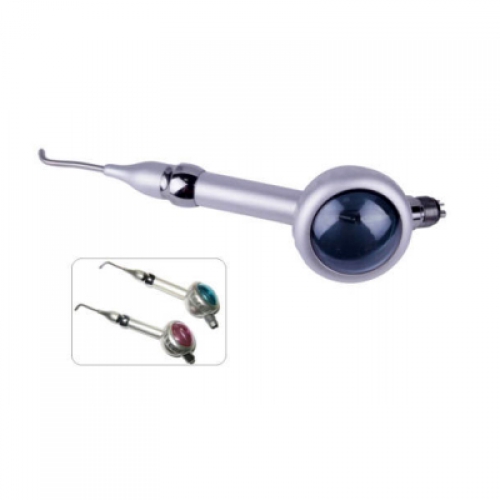Electric handpieces are available that give dentists added benefits when compared to their traditional air-driven counterparts. One significant difference is having a specific RPM, with constant torque and less “bur chatter” (more concentric), so that when polishing or cutting through various types of tooth structure or restorative materials, the bur does not “bog down” or slow down when performing the clinical task. In many clinical situations, an electric dental handpiece can perform the same functions that both an air-driven high-speed and separate low-speed unit can.
Since most clinicians still prefer individual handpieces for high and low speeds so they can be more efficient chairside, this may not make a difference when choosing between the two systems; however, the higher initial investment for electric handpieces may be a consideration for some clinicians. Also, given the ability to “dial in” the desired RPM and use different contra-angles that have different gearing ratios, the electric handpiece can be custom-tailored to perform many other types of clinical procedures such as rotary endodontics, implant placement, and third molar removal (via tooth sectioning), for example. This clinical versatility is very desirable in today’s dental practices where multidisciplinary treatments are becoming increasingly common.
Control panels for electric handpieces are also becoming more automated, allowing the operator to use preset buttons to specifically dial in an RPM for a specific procedure. For example, most polishing procedures should be performed at lower RPM to minimize the generation of heat. Polishing of composite materials can be accomplished efficiently at speeds of 6,000 RPM to 8,000 RPM. Ceramic polishing is generally done in the range of 12,000 RPM to 15,000 RPM. Presets can be made at reduced RPM for caries removal, fine margin refinement on restorative preparations, endodontic cleansing and shaping, and implant drills and placement, to name a few applications. Some models also allow for torque control and have an automatic reversing feature for endodontics( Endodontic Motor ).
These features eliminate any unpredictability and guesswork compared to using a traditional low-speed unit with only an air-pedal foot control. Having the ability to reverse the rotation of the instrument in an electric handpiece is also a helpful feature when polishing restorations because of the importance of having the polishing instrument rotating from the restorative material toward the tooth to avoid damaging or “ditching” the margin.
A recently introduced feature in an air-driven handpiece combines some of the benefits of traditional air-driven and electric handpieces into one instrument. Two new technologies incorporated into this handpiece are speed sensing intelligence (SSI) and superior turbine suspension (STS). These features allow this handpiece to deliver the benefits of constant torque at high speeds when performing various dental procedures, specifically cutting enamel and dentin and removing or sectioning through different types of restorative materials, including metal and zirconium.
According to the manufacturer, some of the benefits of these technologies in an air-driven handpiece are: automatic optimization of power, that is, constant speed under load to avoid stalling; delivery of smooth, constant power and control for maximum cutting efficiency and faster removal of material; speed adjustment of the bur when it is not under load to minimize wear on the bearings; and allowing the handpiece to operate at 330,000 RPM under load without bur chatter or deflection.

